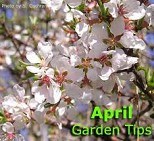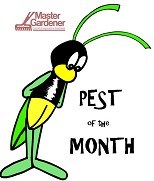Ladybugs are important predators of aphids and other insects. Many organizations sell ladybugs as a natural insect control. However, if you buy these insects to put out in your yard or garden, they must be handled properly so that you receive the full benefit from them.
Ladybugs, or more properly lady beetles, are roundish insects that are usually less than 1/4-inch long. Most of us are familiar with the convergent lady beetle—colored orangish-red with several black spots. Lady beetles may also be brown, yellow, red, pink, orange, or tan with or without black spots, or they may be black with or without red spots.
Lady beetle larvae hatch from yellowish-orange eggs laid in a cluster. The larvae are usually elongated, black and orange, and have large jaws.
Since lady beetles are already present in most areas, you can increase the effectiveness of lady beetles in your own yard if the insects have mulched areas in which to overwinter and insecticides are used sparingly. These practices will probably result in more lady beetles in your yard than if you purchased them.
Garden seed companies and nurserymen frequently sell "convergent lady beetles" after they are collected from large masses that overwinter together, usually in the Pacific states. They primarily feed on aphids but will feed on any soft-bodied, slow moving, tiny animal such as scale crawlers and mites.
If you purchase lady beetles, they should be handled properly. Make sure that there is suitable prey—such as aphids—on your plants when you receive them. If they arrive too early in the spring, store them in the refrigerator for a few weeks until they have something outside to eat.
If there is no food source, the lady bugs will fly away searching for something to eat. Even if there is food, the beetles may fly away just based on their natural instincts. You cannot do anything, short of enclosing your entire yard in netting, to keep them when they want to fly.
Release the lady beetles about sundown at the base of aphid-infested plants. During the night, they will crawl around on your plants and perhaps find enough aphids to stay. Releasing them during the day frequently results in their flying away.
Place the beetles on damp ground that has mulch or fallen leaves on it. The damp mulch provides a humid hiding place for them. If the soil is dry, water it before releasing the insects.
Handle the lady beetles carefully. The more they are disturbed, the more likely they are to fly away to your neighbor's yard.
While purchasing ladybugs may seem to be somewhat problematic, at least you are keeping them in the area. Sooner or later, the population of these beneficial insects will increase.
Praying mantises are much more problematic, as they will eat each other if no other food sources are present. It is not uncommon that an entire egg case will yield one mantis at the end, the so-called "winner" or "fittest" of the group.
Source: David Robson, University of Illinois Extension, horticulture educator Springfield Center, (217)782-6515





